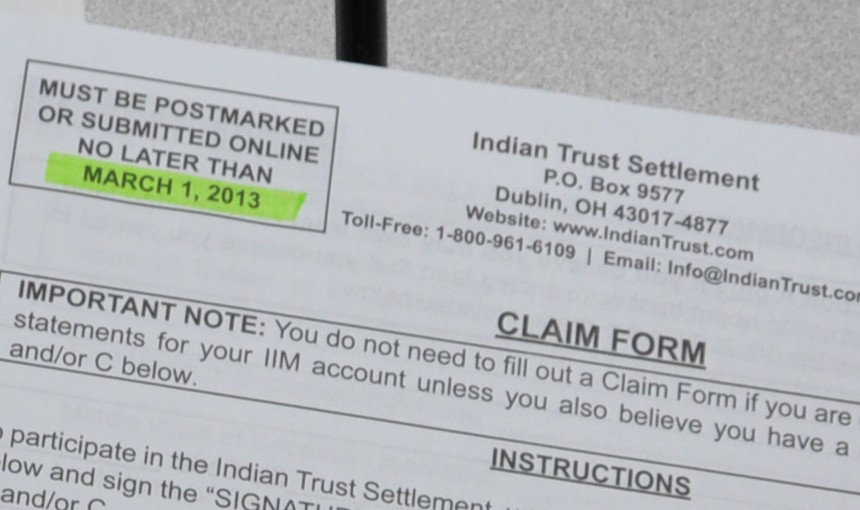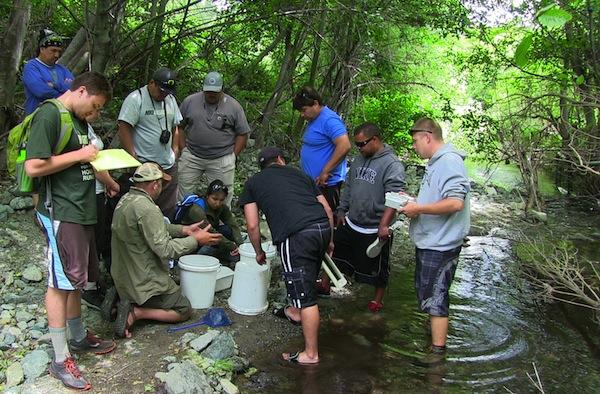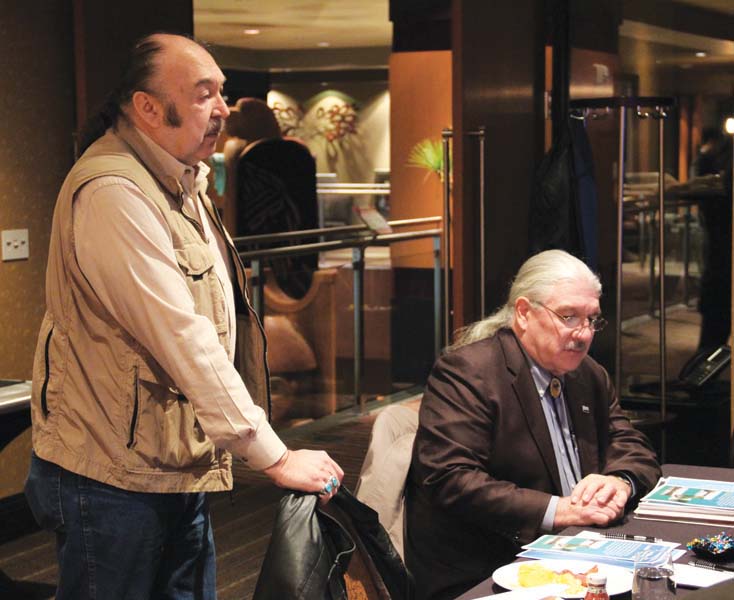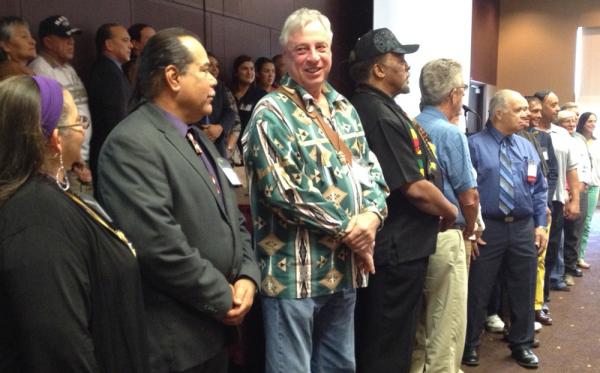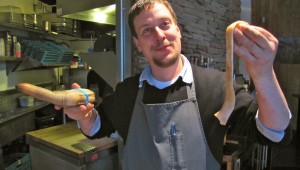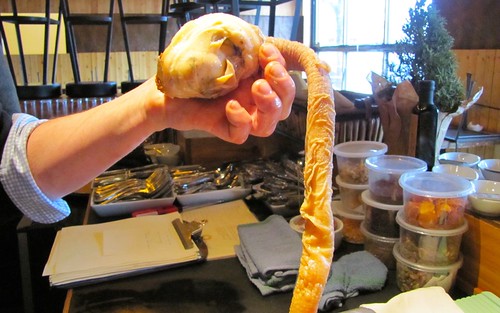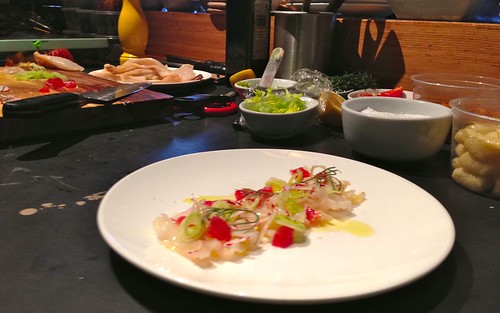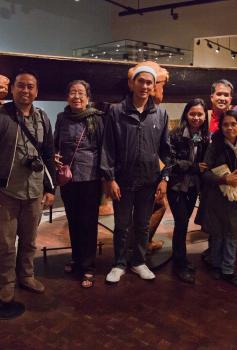The human devastation wrought by the economic energy boom in the Great Plains region may get worse for Native women. This nightmare, according to Keith Darling-Berkus has created a culture of misogyny in which sexual violence—including rape, sex trafficking and domestic assault—are normalized. It has been described as “a male-dominated dystopian nightmare.”
That description is especially ominous for Native women, who are 2.5 times more likely to be victims of sexual violence than women of other races. The perpetrators of this violence are overwhelmingly non-Native.
Native advocates are predicting a similar fallout for women in South Dakota if the TransCanada Keystone XL pipeline is approved. TransCanada plans to house pipeline construction workers in three rural man-camps located close to reservations in South Dakota. Each camp will house approximately 1,000 workers.
Both law enforcement officials and native and women’s rights advocates cite the emergence of these ‘man-camps’—temporary housing for transient workers—as major contributors to a rise in violence against all women wherever they are established.
According to Assistant U.S. Attorney for South Dakota, Kevin Koliner, Native women comprise 40 percent of sex trafficking victims in the state.
Although some research links the recent oil boom to the emergence of a culture of misogyny in North Dakota, Native-women advocates maintain that the Great Plains of North and South Dakota present fertile ground for such a culture to take hold. They note, for instance, that South Dakota is considered by some men to be a sex tourism destination.
“They come in the fall for pheasant hunting season and in summer for the Sturgis Bike Rally,” says Susan Omanson, executive director of BeFree58 Ministries, a non-profit in Sioux Falls serving survivors of sex trafficking.
Sexual violence, including prostitution and trafficking, are firmly imbedded in the culture and economy of South Dakota .
“Pheasant hunting and the bike rally are economic sacred cows in South Dakota and few residents will dare criticize the industries for fear of losing that influx of cash,” notes Chamberlin, South Dakota-based journalist Maria Burch who has covered the area’s economy for several years. “Most folks around here have to work two or three jobs in order to make ends meet. The income from hunting is very important.”
Revenue from pheasant hunting and the Sturgis Bike Rally represent a significant portion of income for many residents. In Tripp County alone, a popular destination for pheasant hunting, hunters spent copy1.3 million in 2011, according to South Dakota Game Fish and Wildlife Agency. Overall, the state agency reports that hunting pumps $66 million into the state. According to a survey conducted by the Sturgis Rally Department, the overall economic impact of the annual motorcycle rally was over $800 million in 2012.
Although most hunters and bikers in the area are well-behaved, there is a dark side to both those activities, according to U. S. Attorney Brendan Johnson, who says, “Wherever you have a large gathering of men, you have a strong opportunity for prostitution and sex trafficking.”
Advocates for victims of trafficking and prostitution note that there is a strange allure in South Dakota for those looking to purchase commercial sex. “There is a wild west, lawless atmosphere that attracts some visitors to our state,” says Burch. “Not much has really been done to discourage that perception.”
Carmen O’Leary, executive director for the Native Women’s Society of the Great Plains, adds that long-standing prejudice against Native people in the Dakotas contributes to a laissez-faire attitude by the public and law enforcement when it comes to pursuing perpetrators of sex crimes against Native women.
Not surprisingly, she says, the safety of Native women doesn’t figure very prominently in economic development projects in the region.
Although the proposed pipeline promises a huge economic boost for the state, South Dakota is totally unprepared for the hidden social and human costs, says Faith Spotted Eagle, Ihanktunwan (Yankton) and member of the Brave Heart Society. She and other pipeline opponents point to the impact of man camps and boomtown mentality on women in the Bakken oil region of North Dakota.
“The attitude [in the Dakotas] seems to be that the lives of a few Indian women are a small price to pay for economics,” says an advocate who asked not to be identified for fear of negative reaction from her board of directors.
In 2013, The Polaris Project, a non-profit organization combating sex trafficking, ranked South Dakota last in the U.S. in its efforts to enact a basic legal framework to combat trafficking.
Arrests for sex trafficking in South Dakota have overwhelmingly been prosecuted under the federal trafficking law. U.S. Attorney Johnson has made the prosecution of these crimes a priority. After an undercover operation during the 2013 Sturgis Bike Rally, his office prosecuted nine men for sex trafficking. Victims ranged from 12 to 15 years of age.
South Dakota passed a law specifically outlawing human trafficking in 2011. In Sioux Falls, one person has been charged under the state law so far, according to Sam Clemons, Public Information officer for the Sioux Falls Police Department. The dearth of law enforcement in much of rural South Dakota only adds to the problem, notes Burch. “Police are spread pretty thin out here,” she says. She thinks that encourages a sense of impunity in men looking to purchase sex. Burch says some of the patrons of the ultra-expensive hunting lodges come to the area with an outsized sense of entitlement.
Nancy Niles of the Oglala Lakota tribe and former resident of Sturgis agrees that tourism promoters often sell South Dakota with romanticized notions of the Wild West associated with the gold rush and pioneer days, where anything goes. “Prostitution at the rally has become normalized,” she says.
Niles lived in Sturgis for 25 years and raised her family there. During that time she says she watched her country town turn into a thick clot of leather and t-shirt shops, strip clubs and a main street that allows public drinking. Commercial sex workers are brought into the city for the rally, according to Niles.
“People got angry with me when I began to call attention to the prostitution that takes place during the rally,” she says. “People prefer to keep their heads in the sand in order to protect the economic injection that the rally brings.”
The hard-partying, anything-goes atmosphere creates a hostile environment for all women in the area.
Niles and her husband recently moved to Nebraska for their retirement. “I could no longer stand to let my taxes go to support this kind of activity,” she says.
Man camps versus tourism
The male tourists who can afford to stay at an upscale, all-inclusive hunting lodge or bring their bikes on extended visits to the bike rally represent a different demographic than those who will be drawn to work on the Keystone pipeline and live in man camps.
“A lot of these guys who come here to work and live in the man camps are on their last dime. They don’t have a whole lot to lose,” notes Sadie Young Bird, executive director of the Ft. Berthold Coalition Against Violence in North Dakota. Indeed, ABC News recently aired a story calling attention to the large increase of registered sex offenders who have relocated to the Bakken oil region.
Marla Bull Bear, executive director of the Native American Advocacy Program in Winner worries about the close proximity of the proposed man-camp in Colume, 10 miles from Winner. Winner is the town closest to the Rosebud Reservation and has a substantial Native population.
Bull Bear’s organization conducts activities designed to divert youth toward healthy traditional Native ways such as a horse camps and coming of age ceremonies.“ Due to poverty and family dysfunction, many of our youth are so vulnerable. They could present easy targets for sex traffickers,” she says.
“Youth in our groups tell us about girls who simply disappear and end up working in the commercial sex industry. Sex trafficking is already here,” she notes.
Jess Keesis, the mayor of Winner, knows first-hand about the rowdy tendencies of men who work in the oil fields, but he believes the camps that will house the pipeline workers will be different. “I’ve worked in the Alaska oil fields and seen oil booms–this won’t be anything like that,” he says.
According to Keesis, the pipeline construction will be far more short-lived than an oil boom and won’t have long-term negative effects on the community. He estimates that it will take about 14 months to complete the pipeline.
Faith Spotted Eagle, however, describes this attitude as terribly shortsighted. “If a woman is brutalized by a pipeline worker, you are talking about a lifetime of impact.”
She bemoans the sense of powerlessness expressed by communities that will be affected by the pipeline. “The average person thinks they can’t stand up to TransCanada. We have internalized this economic-predator thinking that resembles Stockholm syndrome. Since we feel powerless about corporations taking over our communities, we end up siding with these predators.”
For Spotted Eagle, women who suffer from the fallout of economies such as oil are more than unavoidable externalities. “These women have names; they are our sisters, our daughters, our mothers.”
